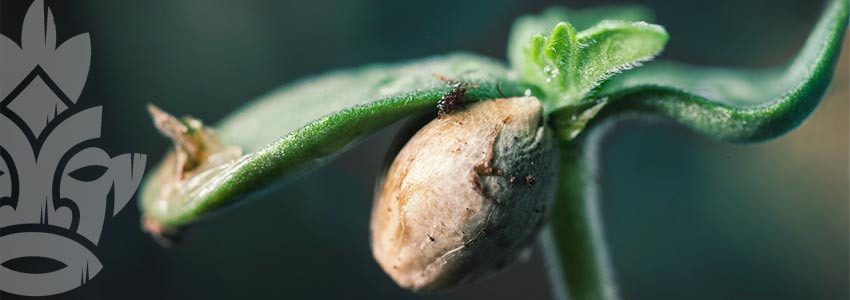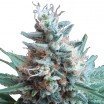Don't have an account?
Register NowYou have to add to cart at least 5 bottles or any program to make checkout.
- BlogCannabis Seeds Vs. Clones: Which One Is Better?
Cannabis Seeds Vs. Clones: Which One Is Better?
Published: October 17th, 2019
Categories:
Cannabis Cultivation
Are you about to start your next grow? If so, you might be wondering whether to grow from seeds or try your hand at cloning. Read on for a detailed look at the pros and cons of both methods of growing.

WHAT ARE THE ADVANTAGES OF CLONING CANNABIS?
Cloning works by taking a cutting from a mother plant and sticking it in a rooting medium until it develops its own roots and can grow into a full plant. Many growers have their own tricks and tips on cloning, but the basics of it work like this:
-
You pick the plant you wish to clone, and take a healthy cutting from it close to the main stem. The cutting should be made with a sharp blade (like a razor) at a 45° angle to the branch.
-
You should then immediately transfer the cutting to water. While it sits in water, you'll need to trim off some of its foliage to preserve the cutting's moisture.
-
Once trimmed, you’ll want to stick your cutting in a rooting medium, like soil or a rockwool cube. Some growers also opt to leave their cuttings to root in water. Whichever medium you choose, your clones will need plenty of humidity and light to root properly.
Growing cannabis clones has a number of advantages. First of all, it allows you to grow countless plants with exactly the same genetics. Let’s say you have a number of plants in your grow room; cloning can help you preserve the genetics of your best performers and produce new harvests with exact replicas.
Cloning is also an extremely fast way to grow because it allows you to pretty much bypass the seedling stage of a plant’s life. Plus, cannabis clones are more mature, meaning they’ll grow much faster than a seedling. Cloning is also a lot more sustainable, especially in commercial settings where growers need to meet large-scale demands.
WHAT ARE THE ADVANTAGES OF GROWING FROM SEED?
In nature, cannabis plants grow from seeds. When female plants have been pollinated by a male, their seeds take roughly 3–5 weeks to mature. Once the female plants wither and die in winter, their seeds fall to the ground, where they eventually germinate in spring to give life to a new generation of plants.
Every seed contains its own genetic information. Once it germinates, these genetics manifest into a unique plant. If you’ve ever found a few seeds in some bud and planted them, you’ll have noticed that, although the seeds came from the same mother, they develop into pretty different specimens.
Now you can see why this genetic differentiation is problematic for cannabis growers who generally seek out reliable plants that produce a consistent product. As a home grower, this might not be of so much concern. On a commercial level, however, genetic differentiation can make it difficult for growers to steadily produce a consistent product. That’s why many commercial growers operating in legal cannabis markets, like parts of the US, choose to use cloning rather than growing from seed.
WHAT’S BETTER: CLONING OR GROWING FROM SEED?

Cloning has obvious advantages, especially for commercial growers producing large harvests, and who need greater control over their end-product. For the average home grower, however, growing from seed is perfectly fine! That’s because cannabis breeding has come so far that, as long as you buy from a respected breeder, you can rest assured you’ll be paying for great genetics.
Cannabis breeders and seedbanks create strains via cross-pollination. This means that they’ll take a male from one strain and use its pollen to pollinate females from another strain. They’ll then grow these seeds, and look for the plants with the best aroma, grow traits, potency, and more.
Finally, once a breeder has found their perfect strain, they’ll use a process of backcrossing (or inbreeding) to strengthen the plant's genetics and produce seeds with less genetic variation. Backcrossing involves crossing a strain either with itself or with one of its parents to create homozygous seeds.
Using these techniques, modern seedbanks are able to produce seeds with reliable and consistent results. Today, the seeds you get from an established seedbank are top-shelf feminized varieties, meaning you don’t even have to worry about dealing with males. Best of all, today’s seedbanks deliver to many parts of the world.
THE CASE FOR CANNABIS SEEDS

For the average home grower, we always recommend growing from seed; it's easy, reliable, and pretty straightforward. Cloning, on the other hand, can be tricky, especially for inexperienced growers. Simply sourcing a clone can be difficult for anyone who doesn’t already have a healthy, mature mother. If you’re not careful, cloning can also cause diseases in both your cutting and your mother plant. The cloning process can also stress plants, increasing your risk of ending up with hermaphrodites.
The bottom line here is this; cloning can sometimes carry more problems than benefits. After all, with the comprehensive range of seeds at Zamnesia, there is no need to hunt for a quality clone—get great genetics delivered to your door literally at the click of a button.
For the most comprehensive and up-to-date cannabis seed catalog, head on over to Zamnesia's seed shop.
YOU MIGHT ALSO LIKE
Related blog posts
- » 10 Cannabis Strains To Grow Outdoors
- » Is It Possible To Use Hydroponics To Grow Organic Cannabis?
- » Increase The Health Of Your Cannabis Plants With Molasses
- » How To Recycle Your Cannabis Growing Soil
- » 10 Ways You Can Make The Most Of Cannabis Trimmings
- » How To Start Your Outdoor Cannabis Grow















